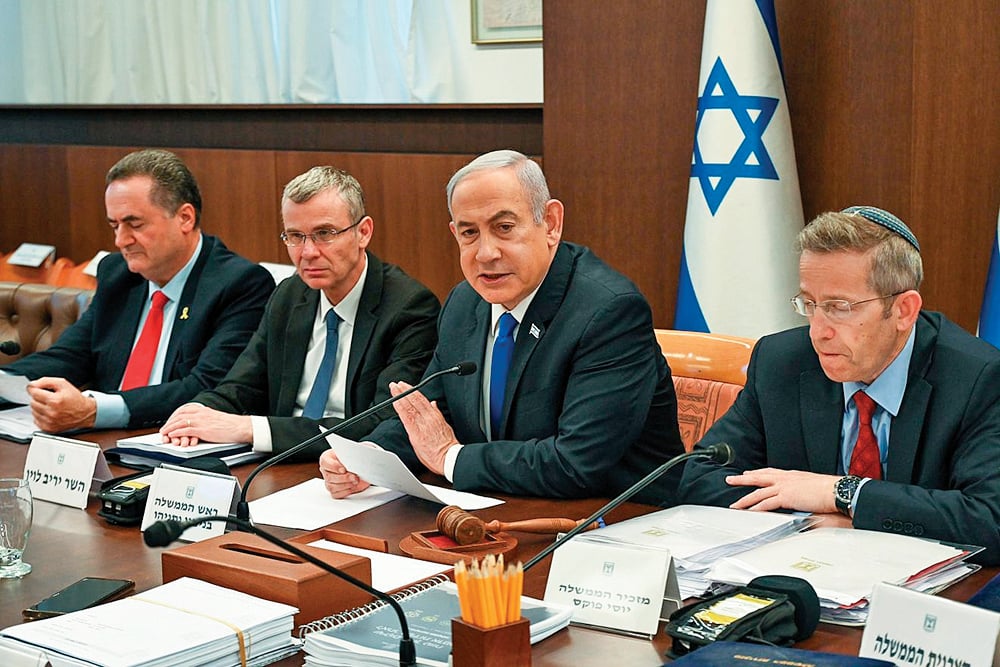I remember the Tehillim assemblies quite vividly. It was almost exactly 19 years ago, I was a senior in high school and our principal called all of us to the Beit Knesset to describe what had just occurred in Israel; a young Israeli soldier, Nachshon Wachsman, had just been captured by Hamas and they were demanding the release of several hundred prisoners in exchange for his return. Around the world, friends and strangers, Jews and non-Jews, prayed, lit extra Shabbat candles, and desperately hoped for the safe return of Nachshon to his family. After Shabbat, the sad news came that, despite heroic efforts on the part of the IDF, Nachshon had been killed. There was a shock and disbelief that reverberated throughout the world that was comforted only by the remarkable words of Nachshon’s parents, “our Father in Heaven heard our prayers, and though we don’t understand why, His answer was ‘no’.” Where does such conviction and belief come from?
The Gemara in Mesechet Berachot (26b) cites a Braitha that credits Avraham as the originator of Tefillat Shacharit. As the Pasuk in our Parsha describes, “V’yishkam Avraham ba’boker el ha’makom asher amad sham et pinei hashem” (And Avraham woke up early to the place where he stood before Hashem). The Braitha connects the word amad (stood) with the action of prayer and, being that this prayer took place early in the morning, Tefillat Shacharit was born. While the Gemara only seems interested in citing this individual Pasuk, the context of this Pasuk, I believe, provides a powerful backdrop.
Just one Perek earlier, in Perek 18, Avraham boldly challenged the fate that Hashem had determined for the city and people of Sedom. In a remarkable display of man reasoning with God, Avraham seems to negotiate with Hashem. Avraham pleads with Hashem to save the city on behalf of some of its righteous inhabitants; beginning with 50, then 45, then 40, then 30, then 20, finally settling that Hashem would agree to save the city even if there is just 10 righteous people to be found within it. It is hard to imagine the courage and conviction that it must have taken on the part of Avraham to engage in this dialogue with Hashem and yet, immediately following it, the description of the people of Sedom and their subsequent destruction is described in great detail, concluding with:
V’Hashem Ham’teer ahl S’dom v’al amorah gefreet v’aysh m’at hashem min hashamayim. V’yahaphoch et he’arim ha’kal, v’et kol ha’kikar, v’et kol yoshivay he’arim, v’samach ha’adamah. Va’Tabet eeshto m’acharav va’tihee nitziv melech
Then Hashem caused to rain on Sodom and on Gomorrah fire and brimstone from Hashem out of heaven; and He overthrew those cities, and all the Plain, and all the inhabitants of the cities, and that which grew upon the ground. But [Lot’s] wife looked back from behind him, and she became a pillar of salt
One might expect or understand if this led to a period of relative distance between Hashem and Avraham. After all, very few requests from any of the Avot had been so dramatically turned down. And yet, there is no such period of distance, there is no ‘time apart’ in their relationship, there is no time of disbelief. Immediately juxtaposed to this emphatic ‘no’ to Avraham’s request, we find the Pasuk we quoted earlier, “V’yishkam Avraham ba’boker el ha’makom asher amad sham et pnei hashem.”
Avraham demonstrated the virtue, that the Wachsman family may have been able to draw from thousands of years later, that Hashem hears every prayer and supplication that we make, but sometimes, for reasons that are beyond our understanding, the answer is no. May Hashem continue to give the Wachsman family and each of us the comfort when the answer is no, and the sense of appreciation when the answer is yes.
Rabbi Tavi Koslowe resides in Teaneck and is the current Assistant Principal for Judaic Studies at Yeshivat Noam – Middle School.
By Rabbi Tavi Koslowe












